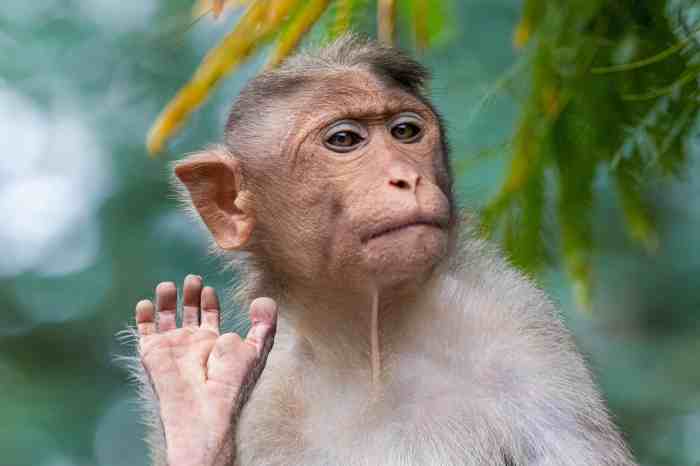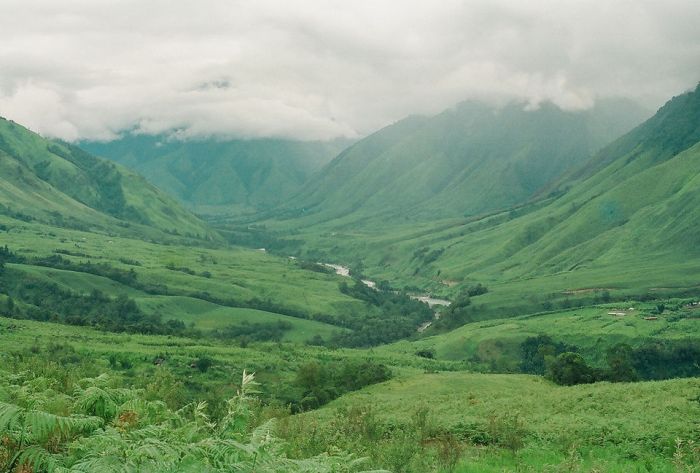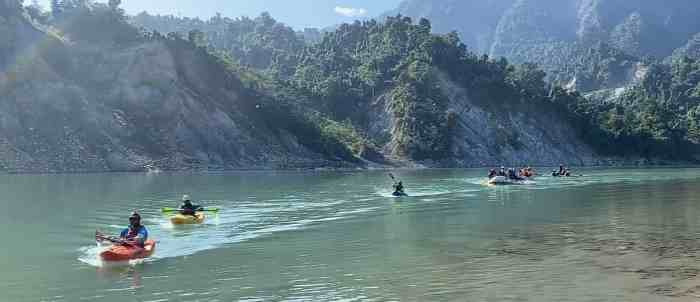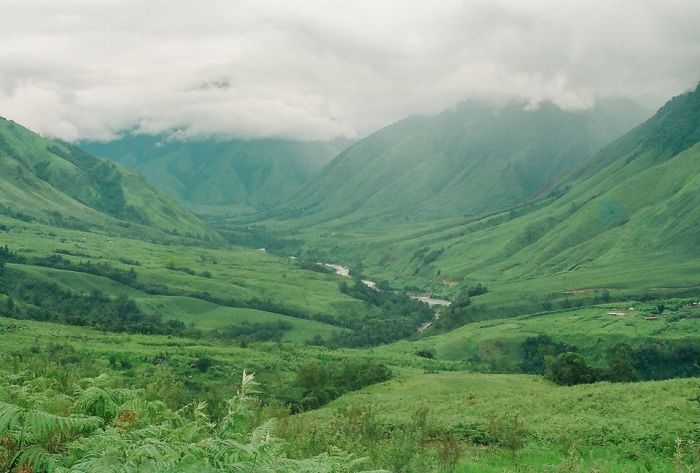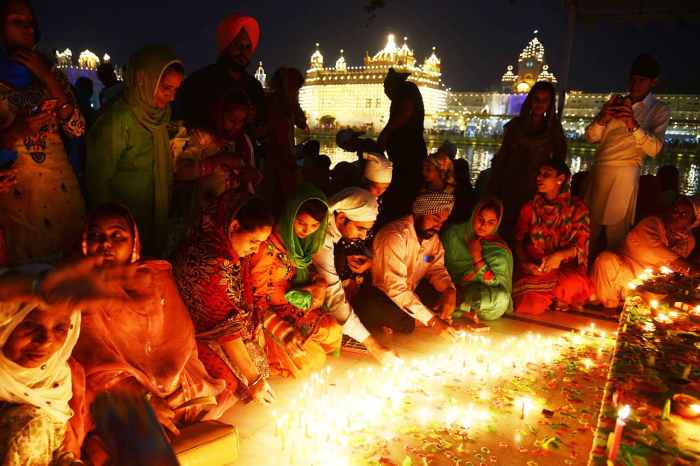Monkeys at Taj Mahal: A captivating dance unfolds between these primates and one of India’s most iconic landmarks. This blog post delves into the fascinating history, social dynamics, and cultural beliefs surrounding the presence of monkeys near the Taj Mahal. We’ll explore the interplay of human-animal interaction, the impact on tourism, and the challenges of managing these fascinating creatures.
From historical accounts to modern observations, we’ll examine the diverse perspectives on this unique relationship. We’ll uncover the environmental factors that draw these monkeys to the area, the potential risks for tourists, and the ongoing efforts to balance the needs of both the monkeys and the preservation of this architectural marvel.
Historical Context
The Taj Mahal, a monument of enduring beauty and historical significance, stands as a testament to love and artistry. Its intricate architecture and profound history have drawn visitors from across the globe for centuries. However, a less-discussed aspect of this iconic landmark, and historical monuments in general across India, is the presence of monkeys. This presence, a recurring theme in human-animal interactions, provides a unique lens through which to view the past and present.
This exploration delves into the historical accounts of these interactions, examining the changing perceptions of monkeys near the Taj Mahal over time.Understanding the historical relationship between humans and monkeys in India requires acknowledging the deep-rooted cultural and religious beliefs that have shaped this dynamic. The presence of monkeys near the Taj Mahal, and indeed many historical sites across the country, holds cultural and religious implications that deserve careful consideration.
Historical Accounts of Monkey Behavior
Early accounts of monkeys in the vicinity of the Taj Mahal likely focused on their presence as a part of the natural environment. There wasn’t the same level of human intervention or management as exists today. Monkeys, like other animals, were part of the local ecosystem, with their movements and behaviours not necessarily documented or studied in the same way we do today.
This is not to say that their presence wasn’t noted, but the emphasis might have been different, possibly more on their natural role in the landscape.
Significance of the Taj Mahal
The Taj Mahal’s historical significance lies in its status as a symbol of Mughal architecture and love. Commissioned by Mughal emperor Shah Jahan in memory of his wife Mumtaz Mahal, it embodies a profound and poignant narrative of human emotion and artistic achievement. The monument’s enduring beauty and cultural value have shaped its position in the global consciousness, becoming an important pilgrimage site.
Those cheeky monkeys at the Taj Mahal are a common sight, but did you know that people living near national parks might be healthier? Studies suggest a correlation between proximity to nature and improved well-being, as evidenced by the findings in this fascinating study on people near national park healthier. So, next time you see those agile primates navigating the iconic monument, remember the potential benefits of nature close by.
It seems even these monkeys have a knack for knowing what’s good for them, in a way.
Cultural and Religious Implications
Monkeys, in many Indian cultures, are often associated with specific religious and cultural narratives. In some traditions, they are considered divine messengers or symbols of a specific deity. Their presence near religious sites, including the Taj Mahal, could be interpreted as a sign of spiritual blessing or a manifestation of nature’s interconnectedness. Understanding the cultural context surrounding monkeys in India is vital to appreciating their presence near historical sites like the Taj Mahal.
Comparing Past and Present Perceptions
The presence of monkeys near the Taj Mahal likely held different meanings in the past compared to the present. Historical accounts would have been influenced by the cultural beliefs and practices of the time, which could have included various interpretations of the monkeys’ presence, ranging from blessings to signs of the natural world. Today, the perception is more multifaceted, considering issues of preservation, visitor safety, and the management of wildlife in urban environments.
Historical Accounts vs. Current Observations
| Aspect | Historical Accounts (Estimated) | Current Observations |
|---|---|---|
| Monkey Behavior | Likely less structured observation; focus on presence as part of ecosystem | More detailed observation; focus on behavior, interactions with visitors |
| Human-Monkey Interaction | Less intervention; monkeys part of natural landscape | Management strategies; visitor safety concerns |
| Cultural Significance | Rooted in cultural and religious interpretations; potentially diverse perspectives | Acknowledging diverse perspectives; conflict between preservation and visitor experience |
Social and Environmental Impacts
The presence of monkeys at the Taj Mahal, while a captivating spectacle for tourists, presents a complex interplay of environmental pressures, social interactions, and preservation challenges. Their presence has become an integral part of the site’s character, raising crucial questions about how to balance the needs of these animals with the preservation of this iconic monument. Managing this delicate ecosystem requires careful consideration of all stakeholders and a nuanced understanding of the factors driving the monkeys’ behavior.The Taj Mahal’s proximity to natural habitats, abundant food sources, and lack of natural predators contribute to the attraction and proliferation of monkey populations.
These factors, combined with the availability of readily accessible food from human activities, create an environment conducive to their presence. The historical context, combined with the monkeys’ adaptability and ability to thrive in human-altered landscapes, underscores the complexity of this issue.
Environmental Factors Attracting Monkeys
The abundance of food sources near the Taj Mahal, including discarded food from tourists and locals, plays a significant role in attracting and sustaining the monkey population. These readily available resources, coupled with the relative lack of natural predators in the area, create a favorable environment for monkey survival and reproduction. The accessibility of the Taj Mahal itself, with its lush vegetation and potential food sources, further contributes to their presence.
Social Implications of Monkey Presence, Monkeys at taj mahal
The presence of monkeys at the Taj Mahal has diverse social implications for both tourists and locals. Tourists often enjoy the spectacle of the monkeys, but their behavior can also be disruptive, leading to potential conflicts or even injuries. Locals, on the other hand, face challenges related to property damage, sanitation issues, and the potential spread of diseases. Their coexistence presents a delicate balance requiring careful management.
Impact on Taj Mahal’s Preservation and Maintenance
The monkeys’ presence directly impacts the Taj Mahal’s preservation and maintenance. Their constant presence can lead to damage to the monument’s structures through physical contact and the scattering of food scraps, which can lead to staining and environmental degradation. Maintaining the cleanliness of the area and preventing monkey-related damage requires considerable resources and dedicated efforts from the authorities.
Challenges in Managing Monkey Populations
Managing the monkey population around the Taj Mahal presents significant challenges. The complex interplay of environmental factors, human activity, and the monkeys’ own behaviors makes it difficult to implement effective and sustainable management strategies. Controlling the monkey population without negatively impacting their natural environment is a delicate balancing act.
Those cheeky monkeys at the Taj Mahal are always a riot to watch. They’re incredibly adaptable, finding ways to scamper and steal food right in front of tourists. If you’re looking for a great deal on flights to see them, check out the current Cayman Airways sale on Miami, New York, and Tampa flights. cayman airways sale miami new york tampa flights That way, you can enjoy your trip to India and still have some extra cash to buy some delicious treats for the monkeys.
They’re definitely worth the trip, these little rascals!
Perspectives on the Issue
| Perspective | Concerns/Priorities |
|---|---|
| Tourists | Enjoying the spectacle of monkeys, avoiding conflicts with monkeys, and maintaining the beauty of the Taj Mahal. A balance between observation and safety is important. |
| Locals | Preventing property damage, sanitation issues, and disease transmission. Their primary concern is the safety and well-being of themselves and their families. |
| Conservationists | Preserving the natural ecosystem and avoiding negative impacts on the monkey population. Maintaining a sustainable coexistence between monkeys and humans is crucial. |
Cultural Significance and Beliefs
Monkeys, particularly the macaques found near the Taj Mahal, hold a significant place in the cultural and religious tapestry of India. Their presence, often viewed as a part of the natural world, is also interwoven with deep-rooted beliefs and traditions. This complex relationship shapes how people perceive and interact with these primates in the vicinity of this iconic monument.The connection between humans and monkeys in India is not simply a matter of coexistence but a rich tapestry of symbolism, mythology, and folklore.
This connection is reflected in numerous aspects of Indian life, including religious practices, art, and daily interactions. The influence of these beliefs is particularly apparent in the context of the Taj Mahal, where the presence of monkeys evokes a unique blend of natural wonder and cultural meaning.
Religious Interpretations of Monkeys in India
Monkeys are deeply ingrained in Hindu mythology, playing a pivotal role in various narratives and beliefs. Their presence often carries symbolic weight, reflecting their association with specific deities and concepts. Understanding these connections is key to comprehending the complex interactions between humans and these primates near the Taj Mahal.
- Hanuman: A significant deity in Hinduism, Hanuman is revered as the embodiment of devotion, strength, and loyalty. His monkey form is central to his character and is often depicted in art and religious ceremonies. This connection profoundly impacts how Hindus view monkeys, associating them with positive attributes.
- Ram: In the epic Ramayana, Hanuman plays a crucial role in assisting Lord Rama. This narrative emphasizes the significance of monkeys in religious narratives and how they are perceived as loyal servants and helpers. This association with a revered figure further strengthens the positive connotations of monkeys in Hindu belief systems.
- Symbolism: Monkeys are often seen as symbols of mischievousness and agility, traits that can be interpreted in various ways within different religious contexts. Their presence can be seen as a reminder of the playful and energetic aspects of the divine or even as a metaphor for the unpredictable nature of life itself. These interpretations vary based on the specific religious sect and personal beliefs.
Impact on Perceptions Near the Taj Mahal
The cultural and religious significance of monkeys shapes how people perceive their presence near the Taj Mahal. The reverence for Hanuman, for example, can lead to a sense of respect and even awe when encountering these animals. Conversely, the perceived mischievousness associated with monkeys might lead to some concerns about their potential impact on the monument’s upkeep or visitor experience.
This dual perception illustrates the complex interplay between cultural beliefs and everyday interactions.
| Religious Interpretation | Impact on Perception of Monkeys near the Taj Mahal |
|---|---|
| Hanuman’s devotion and strength | Monkeys are viewed with reverence and respect, possibly inspiring awe and appreciation for their presence. |
| Mischievous nature | Concerns about potential damage to the Taj Mahal or disruption to visitors might arise. |
| Symbols of the divine | Monkeys’ presence can be seen as a blessing or a manifestation of divine power. |
Management and Conservation Strategies
The majestic Taj Mahal, a symbol of enduring love and architectural brilliance, faces a unique challenge: the presence of a sizable monkey population. These primates, while integral to the local ecosystem, sometimes pose a threat to the monument’s preservation and human safety. Effective management strategies are crucial to ensure the long-term health and beauty of both the monument and the surrounding environment.These strategies must consider the complex interplay between the needs of the monkeys, the protection of the Taj Mahal, and the safety of visitors.
A balanced approach, integrating various methods, is essential for achieving lasting success.
Current Management Strategies for Controlling Monkey Populations
Current efforts to manage monkey populations near the Taj Mahal often involve a combination of deterrents and removal strategies. These methods aim to reduce human-monkey conflict while minimizing the disruption to the natural ecosystem. Careful consideration is necessary to avoid harming the monkeys or disrupting their natural behaviours.
Those cheeky monkeys at the Taj Mahal are quite the sight, aren’t they? They’re a bit of a tourist attraction, but it got me thinking about other vibrant attractions. Speaking of vibrancy, Louisville’s got a fantastic food scene, packed with diverse flavors and hidden gems. Check out bite louisvilles dynamic food scene for a deeper dive into all the delicious options.
Still, the monkeys at the Taj Mahal remain a captivating part of the experience.
- Repellents and Deterrents: Various deterrents, such as noisemakers, motion-activated sprinklers, and even trained dogs, are employed to deter monkeys from approaching areas deemed sensitive, like the monument itself. These methods aim to disrupt the monkeys’ foraging patterns and reduce their inclination to approach human-occupied spaces.
- Controlled Feeding and Habitat Management: Strategies that reduce the availability of food sources in human-populated areas are vital. This includes controlling the placement of food waste and providing alternative feeding locations to prevent monkeys from relying on human-provided resources. Sustainable habitat management plays a key role in maintaining the balance of the ecosystem.
- Monitoring and Research: Continuous monitoring of monkey behavior, population trends, and their response to different management strategies is crucial. Research into their daily routines, preferred feeding areas, and social structures helps tailor management approaches for maximum effectiveness.
Effective Methods for Mitigating Conflicts Between Monkeys and Humans
Effective conflict mitigation involves understanding the triggers for monkey aggression and implementing proactive measures to prevent confrontations. A proactive approach, rather than reactive measures, is more effective in maintaining peace.
- Education and Awareness Programs: Educating visitors and locals about safe interactions with monkeys is vital. Clear signage and information materials should highlight the importance of not feeding monkeys and maintaining a safe distance.
- Security Measures and Visitor Guidelines: Robust security measures, including controlled access points and designated visitor zones, can minimize the opportunities for conflict. Strict adherence to visitor guidelines is essential for preventing interactions that may escalate into conflicts.
- Response Protocols for Aggressive Monkeys: Clearly defined protocols should be in place for dealing with aggressive monkeys, including procedures for notifying authorities and safely removing monkeys from areas where conflict is likely.
Possible Solutions for Safeguarding the Monument from Damage Caused by Monkeys
Protecting the Taj Mahal from damage requires a multifaceted approach that combines physical barriers with careful monitoring and intervention. A holistic approach to the problem is key.
- Protective Fencing and Barriers: Implementing sturdy physical barriers around vulnerable areas of the monument can deter monkeys from accessing sensitive surfaces and structures. Appropriate materials and designs are crucial for both effectiveness and aesthetics.
- Monitoring and Maintenance: Regular monitoring of the monument’s condition and swift repairs for any damage caused by monkeys is essential. This proactive approach prevents minor damage from escalating into major structural issues.
- Innovative Security Technologies: Exploring and implementing innovative technologies, such as motion-activated cameras and smart security systems, can enhance surveillance and response capabilities.
Importance of Maintaining Ecological Balance Around the Taj Mahal
The ecological balance of the area surrounding the Taj Mahal is intrinsically linked to the monument’s preservation. Maintaining biodiversity and supporting the health of the ecosystem is essential for long-term preservation.
| Management Strategy | Effectiveness | Potential Drawbacks |
|---|---|---|
| Repellents and Deterrents | Often effective in short-term, can deter monkeys | May not be sustainable, can harm or disrupt the monkey population |
| Controlled Feeding and Habitat Management | Promotes sustainable balance, reduces dependency on humans | Difficult to implement comprehensively, may require significant resources |
| Monitoring and Research | Provides data-driven solutions, enhances long-term strategies | Requires consistent effort, data analysis might be challenging |
Tourism and Visitor Experiences
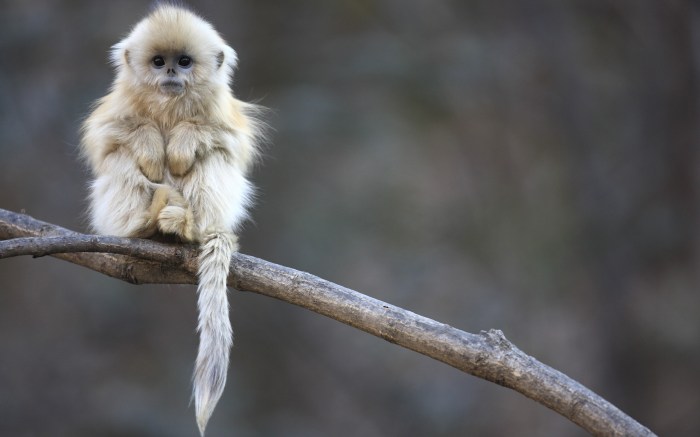
The Taj Mahal, a breathtaking monument, attracts millions of visitors annually. However, the presence of monkeys adds a unique dimension to the tourist experience, demanding careful consideration of visitor safety and the welfare of the primate population. Understanding the impact of these interactions is crucial for ensuring a positive and memorable experience for all.
Impact of Monkeys on Tourist Experience
The presence of monkeys at the Taj Mahal can significantly influence the visitor experience. While some find the playful antics endearing, others may find the monkeys disruptive or even intimidating. The unpredictability of their behavior can sometimes lead to unexpected encounters, altering the serene atmosphere that visitors seek. This unpredictability, while often charming, can also cause stress and anxiety for some tourists.
Potential Risks and Safety Concerns
Monkey interactions can pose potential risks to tourists. Aggression, especially when monkeys feel threatened or are competing for food, is a possibility. The potential for bites or scratches, and the spread of diseases through contact with monkey feces, highlights the importance of safety precautions. Visitors should always be aware of their surroundings and take necessary steps to prevent unwanted encounters.
Enhancing Visitor Safety and Respect
Maintaining visitor safety while respecting the monkey population requires a multi-faceted approach. Educating visitors about safe interaction practices, including not feeding the monkeys, is crucial. Providing clear signage in multiple languages, and strategically placed barriers to prevent close encounters, are vital. Emphasizing the importance of respectful behavior towards the animals is also critical for a harmonious coexistence.
Providing Informative and Engaging Content
Providing visitors with accurate and engaging information about the monkeys is essential. This can include educational displays at the Taj Mahal explaining the monkeys’ behavior, their role in the ecosystem, and the importance of conservation efforts. Interactive exhibits, videos, or audio guides can further enhance understanding and appreciation for these primates. This approach empowers visitors to become responsible tourists.
Best Practices for Responsible Tourism
| Aspect | Best Practice |
|---|---|
| Food Handling | Never feed the monkeys. Providing food encourages aggressive behavior and negatively impacts their health. |
| Interaction | Maintain a safe distance from monkeys. Do not approach or attempt to touch them. |
| Personal Belongings | Keep valuables secure. Monkeys may be tempted by food or items carried by visitors. |
| Signage | Clear signage in multiple languages should be strategically placed, educating visitors on safe practices and respecting the monkeys. |
| Waste Management | Dispose of waste properly to avoid attracting monkeys. |
| Monitoring | Visitors should observe and report any unusual behavior from the monkeys to the park authorities. |
| Conservation Efforts | Support conservation initiatives focused on protecting the monkey population. |
Visual Representation
The Taj Mahal, a monument of timeless beauty, stands as a testament to love and architectural brilliance. However, the vibrant tapestry of life around it, including the presence of monkeys, adds a unique dimension to the visual experience. This section delves into the visual representation of these interactions, exploring the monkeys’ impact on the overall aesthetic and the beauty of the monument itself.
Typical Monkey Seen Near the Taj Mahal
A typical monkey seen near the Taj Mahal is likely a Hanuman langur. These primates are commonly brown or grayish-brown, with a varying degree of reddish tones. They possess a distinctive long, slightly bushy tail, which often appears darker than their body. Their faces, often marked with a more pronounced facial coloration, are a noticeable feature. Their size can vary based on the specific species and their age.
They are agile and adept at navigating the varied terrain near the monument.
Architectural Beauty of the Taj Mahal
The Taj Mahal’s architectural brilliance lies in its symmetrical design and intricate carvings. Its white marble facade, reflecting the light of the sun and moon, is breathtaking. The intricate floral and geometric patterns, meticulously carved into the marble, add to its visual appeal. The monument’s grandeur and meticulous craftsmanship are evident in every detail, from the minarets to the elaborate gateways.
The structure’s harmonious blend of various architectural styles, including Persian, Ottoman, and Indian, further enhances its aesthetic beauty.
Visual Representation of Interaction
The interplay between the monkeys and the Taj Mahal presents a fascinating visual narrative. Photographers and visitors alike can capture the monkeys interacting with the monument’s architecture. Images of monkeys perched on the walls, leaping between the structures, or playfully interacting with the surrounding flora provide a unique visual perspective. The juxtaposition of the ancient monument and the agile, lively monkeys can be a compelling visual narrative, contrasting the monument’s timeless beauty with the vibrant energy of nature.
Impact on Visual Appeal
The presence of monkeys can significantly impact the visual appeal of the Taj Mahal. While some might find the monkeys a distraction from the monument’s beauty, others see them as an integral part of the landscape. Their playful movements and interactions can add a sense of life and vibrancy to the scene, adding a unique element to the visual experience.
The presence of monkeys adds an element of natural chaos, contrasting with the deliberate order and symmetry of the Taj Mahal. This contrast can be visually compelling, creating a dynamic visual narrative.
Comparison: Taj Mahal and Monkeys
Imagine a photograph of the Taj Mahal, its white marble reflecting the sunlight, bathed in ethereal light. In the foreground, several monkeys, with their brown and gray coats, are playfully climbing on the walls and interacting with the surroundings. This visual juxtaposition highlights the contrasting aspects of nature and human creation. The monkeys, with their agility and vibrant energy, become an integral part of the visual story, adding a layer of natural dynamism to the monument’s stillness.
The image illustrates the coexistence of human and natural elements in a shared space, offering a unique perspective of the monument and its environment.
Last Point: Monkeys At Taj Mahal
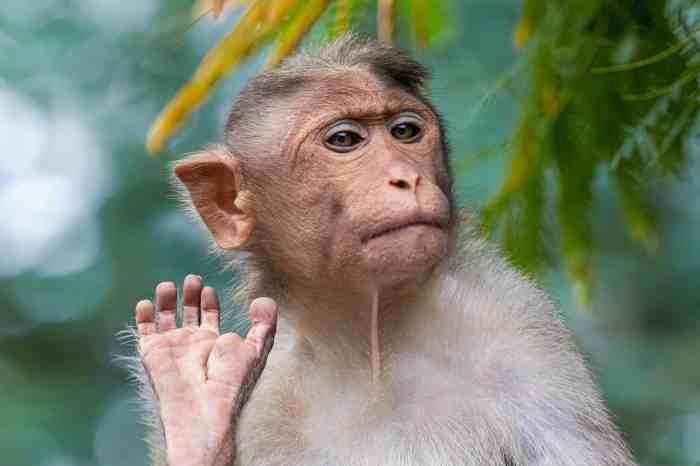
In conclusion, the presence of monkeys at the Taj Mahal presents a complex interplay of history, culture, and conservation. This fascinating interaction highlights the delicate balance between human activity, animal behavior, and the preservation of natural and historical treasures. Understanding these dynamics is crucial for responsible tourism and sustainable coexistence in this unique environment.
